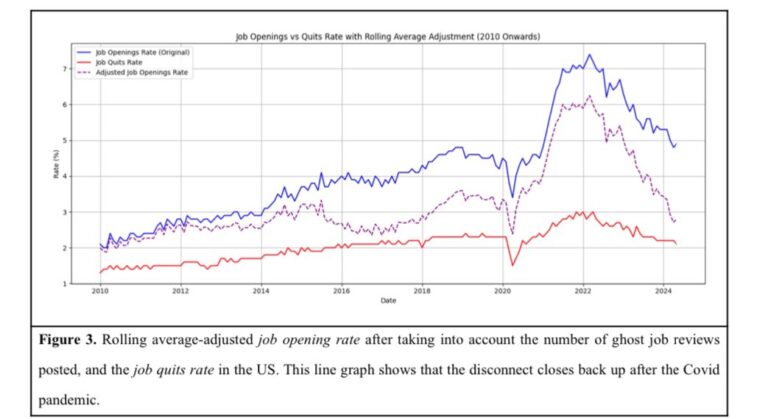Unrealistic Job Requirements Are Everywhere—Here’s How to Spot Them, Beat Them, and Get Hired
Unrealistic job requirements are clogging today’s listings—from “entry-level” roles asking for 5+ years’ experience to 24/7 availability. This expert guide shows job seekers how to decode inflated postings, tailor applications, pass ATS filters, and interview with confidence—backed by data, recruiter insights, and smart tools from Wealth Waggle.
Key takeaways:
- Unrealistic job requirements are often wish lists, not must-haves; apply when you meet ~60–70% of the core needs. (Harvard Business Review)
- One-third of new hires quit within 90 days when expectations don’t match reality—employers pay for inflated ads later via turnover. (crosschq.com)
- “Entry-level” roles frequently ask for mid-level experience; learn to reframe transferable skills and use referrals to bypass rigid gatekeeping. (Business Insider)
- Many rejections happen before a human sees you; understanding ATS basics and keyword strategy is essential. (Wikipedia)
- Job seeker confidence is rebounding but mixed—focus on targeted applications and employer fit over volume. (ZipRecruiter Economic Research)
What exactly are “unrealistic job requirements”?
Unrealistic job requirements are inflated, contradictory, or out-of-touch demands in a posting that don’t reflect the real work. Think “entry-level” roles asking for 5+ years, laundry lists of barely related tools, or “24/7 availability” for standard pay. They’re usually aspirational wish lists rather than true minimums, and they can quietly filter out great candidates—often before a human looks at your resume.
Bottom line: treat most postings as starting points, not stone tablets. Use the strategies below to decide when to apply—and how to win.
Why do inflated requirements keep showing up?
Short answer: speed, copy-paste JD templates, and “unicorn” thinking. Hiring teams stack “nice-to-haves” on top of core needs, fold multiple roles into one, and expect experience with tools that launched last year. Add budget pressure and you get ads that scare off the exact people who’d grow into the job. The result? Smaller applicant pools and mismatched hires who are more likely to churn quickly. (crosschq.com)
Are “entry-level” jobs really asking for mid-level experience now?
Yes—especially in tech and adjacent fields. Reports and first-person accounts show “starter” roles demanding 2–3+ years’ experience, squeezing out new grads and switchers. Use internships, projects, and referrals to prove readiness—and apply anyway when you meet the core 60–70%. (Business Insider, Harvard Business Review)
Reddit reality check
“All of these were labeled ‘Entry-level.’ … 3–4 years in ML, Python, Java, C#, and do both backend and ops.” (Reddit)
What’s the “jack-of-all-trades” posting—and why is it a red flag?
It’s a single role that mashes together three jobs (e.g., sysadmin + developer + PM), often with entry-level pay. These ads predict overload and churn. Look for scope creep like “wear many hats,” vague deliverables, and conflicting traits (“independent self-starter who follows instructions to the letter”). When you see it, probe the day-to-day in the interview and negotiate for a clear scope. (Real-world sentiments echo this: “We wear many hats here” often translates to multiple roles with no promotion in sight.) (Reddit)
Are 24/7 on-call expectations and unpaid trials normal?
Reasonable businesses set boundaries and pay for time. “Always on” language (nights, weekends, “as needed”) without compensation is a burnout trap. Same for lengthy unpaid take-home projects—reasonable skill checks are time-bounded and directly relevant. If a “trial” generates real business value and takes hours, ask for pay or offer a smaller sample deliverable.
Is ATS blocking my resume before anyone sees it?
Possibly. Applicant Tracking Systems (ATS) parse and rank resumes against keywords, formatting, and simple logic. If your resume lacks the right phrasing or uses complex designs, a human might never see it. Learn the core keywords from the posting, mirror phrasing naturally, and avoid graphics-heavy templates that confuse parsers. (Wikipedia)
Pro move with Wealth Waggle: Their tools help align language to role needs and improve ATS pass-through, so qualified applicants actually reach recruiters.
Should I apply if I don’t meet every requirement (the 70% rule)?
Yes. Research popularized via HBR shows men tend to apply when they meet ~60% of qualifications, whereas many women hold back until they’re at 100%. Apply when you meet the core 60–70%—especially if you can show learning agility. (Harvard Business Review)
How do I triage a posting in 60 seconds?
Start by splitting “wish list” vs. “core.” Use this quick lens:
| What Job Ads Say | What Teams Usually Need |
|---|---|
| “5+ years for entry-level” | Trainable candidate with relevant internships/projects |
| “Expert in 15+ tools” | Competence in 3–4 core tools + ability to learn |
| “Available 24/7” | Occasional flex + clear comp for extra time |
| “Recent grad with 5+ years” | Recent grad with real projects, coursework, or co-ops |
If your strengths line up with the right-hand column, you’re likely qualified to apply.
How do I tailor my resume without faking it?
Lead with matched outcomes, not identical tools. Swap “managed Jira board” for “ran agile sprint rituals” if the posting names a different tracker. Quantify contributions, group similar tools (e.g., “SQL family”), and showcase ramp speed (“learned X in 3 weeks to deliver Y”). Wealth Waggle’s AI-guided resume templates and recruiter-informed suggestions help you reframe experience and highlight transferable skills convincingly.
What counts as a transferable skill—and how do I phrase it?
Translate context to capability: campaign analytics → product insights; lab research → experimental design; classroom teaching → stakeholder communication. Keep the formula (context → action → result) and anchor to metrics. Even elite companies hire for potential: strong foundations, culture add, and growth trajectory trump perfectly matching every bullet.
How do I get past ATS without keyword stuffing?
Mirror key phrases exactly once where natural (“forecasting models,” “HIPAA compliance”), use standard headings (Experience, Education, Skills), and keep layout simple (no text in images or columns). Wealth Waggle’s ATS compatibility tools flag gaps and suggest precise, human-readable wording that machines can parse.
What should I ask in interviews to expose unrealistic scope?
Open with scope clarity: “What are the top 3 outcomes for the first 90 days?” “What does success look like at 6 months?” “Which ‘requirements’ are truly must-have vs. ramp-friendly?” Also ask, “How many interviews do you run? Any take-home?”—and calibrate expectations; even big tech learned that four interviews can be enough. (Financial Times)
How can networking bypass rigid filters?
Warm intros change the conversation from “checklist” to “capability.” Ask insiders what really matters in the role, request a referral when aligned, and keep the relationship reciprocal (share leads back). Referrals nudge hiring managers to weigh potential over perfection.
“Networking is connecting people with ideas and opportunities”—and it’s still the best antidote to robotic filters.
Should I accept big unpaid take-home tests?
Short, role-relevant demos are fine; week-long free labor is not. If the ask feels like billable work, request a bounded sample or paid pilot. Many candidates report that lengthy trials rarely predict success but often signal scope chaos.
How do I push back on degree requirements I don’t have?
Point to the shift toward skills-based hiring (in both public and private sectors) and bring a “skills portfolio”: assessments, projects, and outcomes. Several governments and major companies have peeled back degree screens—implementation’s uneven, but the direction of travel is clear. (Axios, Financial Times, Harvard Business School)
What are signs a role might be a ghost job or misrepresented?
Missing pay ranges (in covered states), constantly re-posted reqs, generic responsibilities, or outsized take-home tests can hint at a pipeline-building ad rather than an active search. Candidates on forums often flag these patterns—treat them as smoke, not proof, and verify with direct, respectful questions. (Reddit)
What’s the real cost—do employers pay a price for inflated ads?
Yes. When the job doesn’t match the JD, new hires churn quickly, gutting team momentum and ballooning hiring costs. Research shows about one-third of new hires leave within 90 days, often citing mismatched expectations. That’s expensive—and avoidable with clear, realistic postings. (crosschq.com)
How should employers fix unrealistic job descriptions (JDs)?
- Start with outcomes. Define 3–5 core competencies and first-90-day deliverables.
- Trim the list. Fewer bullets, less jargon; tools can be learned, fundamentals can’t.
- Test the language. Inclusive JD tools (e.g., Textio) can widen your pipeline.
- Reality-check the process. Don’t stack 8 interview rounds; evidence says fewer can suffice. (Textio, Financial Times)
What do the 2025 numbers say about the market mood?
Job seeker confidence has edged up in Q2 2025 to 95.6 after a dip, but optimism varies by group. Translation: there’s opportunity, but targeted, quality applications beat spray-and-pray. (ZipRecruiter Economic Research)
What should new grads and switchers do differently?
- Ship real projects (open source, case studies, capstones).
- Leverage internships or apprenticeships as proof of pace.
- Use referrals to jump the line and tell a crisp story.
- Apply when you’re in the 60–70% zone—and let interviews surface the rest. (Harvard Business Review)
Fast, ethical ATS primer (for humans): What matters?
- Use clean headings, bullet points, and standard fonts.
- Mirror essential phrases once; avoid keyword walls.
- Save as PDF (unless the employer requests DOCX).
- Keep contact info text-selectable; no images for text.
For context on what ATS do and why, see the reference article on applicant tracking systems. (Wikipedia)
Mini How-To: 5 steps to respond to an “impossible” posting
- Score the core (your 60–70%): circle outcomes, not every tool.
- Reframe your past in the job’s language (context → action → result).
- Patch gaps with a quick learning plan you can mention in the interview.
- Ask a warm intro for a referral; personalize your note.
- Set boundaries on tests and time; your energy is a scarce resource.
Infographic: Wish List vs. Real Need
A quick reality check for any JD
- JD says: “Expert in 12 tools”
Real need: 3–4 core tools + fast learner - JD says: “Recent grad with 5+ years”
Real need: Projects, internships, ramp speed - JD says: “24/7 availability”
Real need: Clarity on after-hours + comp - JD says: “MBA required”
Real need: Communication, analysis, ownership
Toolkit: Which Wealth Waggle tools help most here?
- AI-Guided Resume Templates to reframe experience and highlight transferable skills credibly.
- Recruiter-informed suggestions to match employer language without keyword stuffing.
- ATS compatibility checks so strong candidates aren’t filtered out by formatting.
- Job Finder Pro to uncover roles earlier and avoid late-stage pileups.
Explore the AI career coach & tools hub for resume, LinkedIn, and interview prep—purpose-built for job seekers facing inflated JDs.
If navigating “wish-list” postings is slowing you down, see how Wealth Waggle’s career tools help you tailor, pass ATS, and interview with confidence. (We keep it practical and outcome-focused.)
Signals your time is better spent elsewhere (quick list)
- No salary range where legally required, or hand-wavy comp
- Eight interview rounds “just to be sure”
- Giant unpaid “homework” project
- Contradictory traits (“take charge” and “follow orders perfectly”)
- Tech time travel (“5 years” with a 1-year-old tool) (Financial Times, The Economic Times)
Reality check table: Candidate view vs. employer view
Candidate: “I’m missing two tools on their list.”
Hiring manager: “You can learn the tool. Show me how you shipped outcomes like this before.”
Candidate: “They want ‘leadership’ and ‘takes direction.’”
Hiring manager: “We want initiative and collaboration; give examples of both.”
Candidate: “They want an MBA.”
Hiring manager: “We need structured thinking and stakeholder skills—show results.”
FAQs
Why do companies list impossible requirements?
They blend “wish list” items, time-savers (copying old JDs), and role consolidation. Sometimes it’s signaling—hoping to attract unicorns—yet it often shrinks the applicant pool and raises churn risk later.
What’s a good rule for applying if I’m not a perfect match?
Apply around the 60–70% match mark—especially if you can demonstrate ramp speed and adjacent wins. That’s backed by well-known HBR reporting on application behaviors. (Harvard Business Review)
How can I tell “must-have” from “nice-to-have”?
Look for repeated themes (outcomes, stakeholders, core tools). Anything mentioned once in a long laundry list is usually optional. Validate in the interview: “What skills will drive my success here in the first 90 days?”
How do I avoid ATS pitfalls?
Use simple formatting, standard headings, and exact-match phrasing once where it fits naturally. Wealth Waggle’s ATS checks help you keep things machine-readable without sounding robotic.
Are long take-home tests normal?
Short, role-relevant exercises are fine. Multi-day unpaid assignments—especially on real company work—are a red flag. Ask to scope a smaller sample or request compensation.
What if I’m a new grad with no “years of experience”?
Use projects, capstones, internships, and volunteer work to prove you can do the job. Many “entry-level” postings are mis-leveled—apply when you match the outcomes. (Business Insider)
Is skills-based hiring actually happening?
Yes—governments and large employers are moving that direction, though adoption varies. Bring a portfolio of skills evidence to strengthen your case. (Axios, Financial Times)
Do unrealistic requirements harm employers too?
Absolutely. Mismatched expectations drive early attrition and reputational damage, extending time-to-fill and cost-per-hire. Data points to ~1/3 quitting within 90 days when the role doesn’t match the promise. (crosschq.com)
Conclusion
Inflated job ads are noisy—but beatable. Treat JDs as imperfect signals, focus on core outcomes, and apply when you’re in the 60–70% zone. Tailor your materials, use referrals, and set boundaries on time and tests. If a posting still smells off, walk—your energy belongs with the teams that value potential and clarity.
Ready to turn down the noise? Explore Wealth Waggle’s career tools for resume tailoring, ATS readiness, and interview prep—all built to help job seekers cut through unrealistic requirements and get to yes.
Citations & further reading
- Applicant Tracking Systems (ATS): overview and definition (Wikipedia). (Wikipedia)
- Application behavior (60% vs. 100%): Harvard Business Review. (Harvard Business Review, senc.es)
- New-hire early attrition: Crosschq insights on 90-day quits. (crosschq.com)
- “Entry-level” inflation: Business Insider reporting. (Business Insider)
- Interview inflation & practical limits: Financial Times on AI-era interviews; Google’s “four” rule context. (Financial Times)
- Job seeker confidence (2025 Q2): ZipRecruiter Research. (ZipRecruiter Economic Research)
Forum voices (perspective, not proof): r/recruitinghell threads on entry-level years, “many hats,” and ghost postings. (Reddit)
Talk Resumes with Wealth Waggle
Perfect your resume with AI-assisted feedback and tips (using the latest recruiting intelligence).









